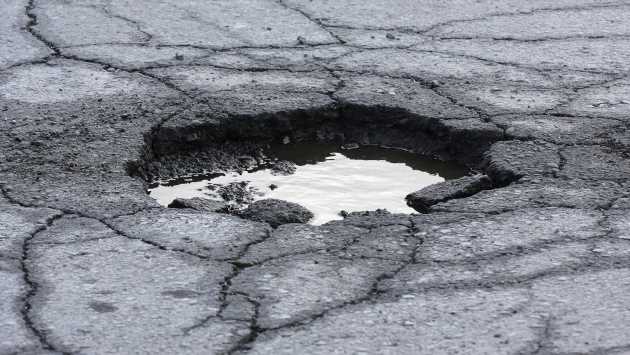As inflation hits repair costs, leading insurer warns wet weather could make matters worse for motorists
The number of claims for pothole damage has soared by more than one third since 2016, according to leading car insurer Admiral.
With weather that’s been significantly wetter than the average for July, and still more rain forecast for August, the insurer has warned that the effects of surface water are likely to make matters worse.
It’s not just the number of claims that has soared either, as the average cost of damage caused by potholes has risen by 16 per cent in the last year alone, as inflationary factors hit garages and tyre repair businesses alike.
“We must bring UK roadworks out of the dark ages” – 2023 wish list
“If you have Comprehensive cover, claiming for pothole damage through your insurer should be a straightforward process, but it can affect your no claims bonus and you may need to pay an excess,” says Admiral’s head of claims Lorna Connelly. “If you think you’ve hit a hum-dinger, get out and check for damage at the safest opportunity. Take photos of the pothole and the damage to your car and consider taking your vehicle to a mechanic to check for damage.”
If you don’t have comprehensive insurance, then you’ll either have to fund repairs out of your own pocket or seek compensation from the authority responsible for maintaining the road with the pothole that you hit.
We reported earlier this year that cash-strapped local authorities and councils were forced to cough up almost £27 million in compensation payouts to drivers whose cars suffered damage on the UK’s poorly maintained roads in 2022. (See our ‘how to claim for pothole damage’ guide if you need to make a claim.)
That’s more than a quarter of the total budget spent actually fixing potholes, as councils poured £93.7 million into repairing 1.4 million of them at a cost of £67 per pothole. Citroen UK crunched the numbers supplied by the Department of Transport and road construction trade body Asphalt Industry Alliance, to show that compensation payouts amounting to £11.6 million were made to motorists.
Incredibly, a further £11.1 million was then spent on claims handling, meaning the total cost of compensation could have seen another 340,000 potholes repaired instead.
Since 2017, Citroen reckons a total of £139 million has been spent paying compensation to aggrieved motorists suffering tyre, wheel and suspension damage after striking potholes, a sum of cash it says could have filled an extra 2.3 million potholes in the last five years.
Pothole claims: how to claim for pothole damage to your car
Figures from the Department of Transport on MoT failures have also been revealed that give a potential insight into the effect of dire tarmac conditions on car safety. In 2022, 1,069,069 MOT failures were attributed to damaged coil springs, with fractured or broken front passenger side coil springs accounting for 346,383 of MOT failures in the category. Coil springs caused the second-highest number of MoT failures behind tyre MoT fails, according to numbers shared via a Freedom of Information request made by online insurer One Sure.
Potholes to make 18% of roads undriveable in five years
The Asphalt Industry Alliance’s (AIA) Annual Local Authority Road Maintenance (ALARM) survey suggests that one in five roads – equivalent to 37,000 miles of Tarmac – are in such poor condition that they have less than five years of life left in them.
A total of around £14billion is needed to fix every pothole in England and Wales. This estimate is £2billion higher than that made in last year’s ALARM survey and £5billion more than was needed in 2012. The Government recently announced an additional £200million of investment in pothole repairs, meaning a total budget of £700million for 2023/24, but motoring groups said this would not make much difference.
The ALARM report places local roads into one of three categories – good (more than 15 years of life remaining), adequate (between five and 15 years of life remaining) and poor (less than five years of life remaining).
Although more than half of local roads are currently classed as good, there are approximately 100,000 miles of asphalt that will need rebuilding at some point in the next 15 years.
Now read more on how best to maintain your car…
Source: Read Full Article



 “We must bring UK roadworks out of the dark ages” – 2023 wish list
“We must bring UK roadworks out of the dark ages” – 2023 wish list Pothole claims: how to claim for pothole damage to your car
Pothole claims: how to claim for pothole damage to your car